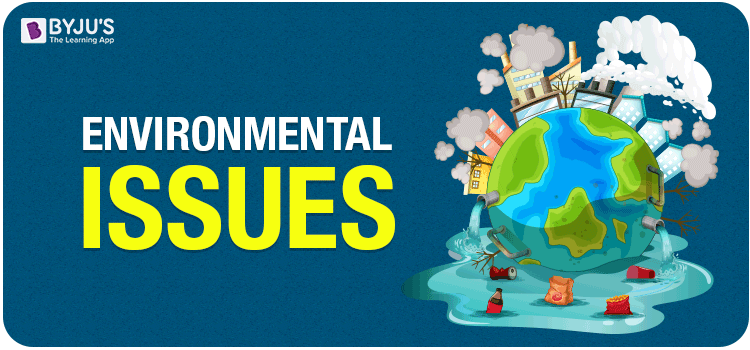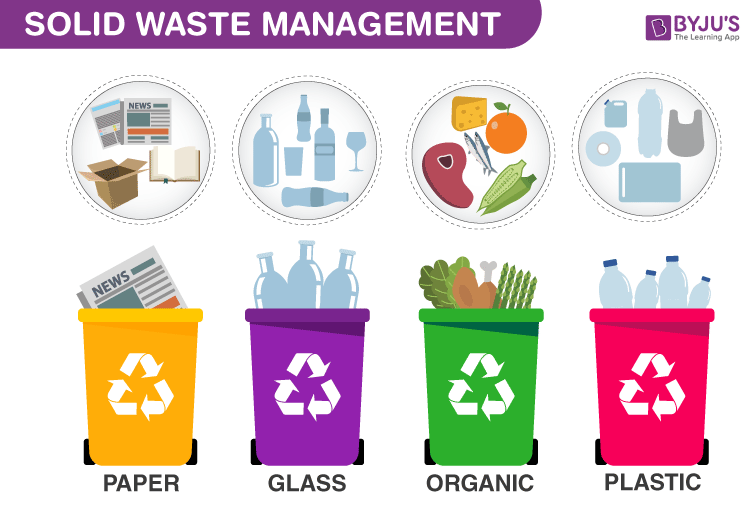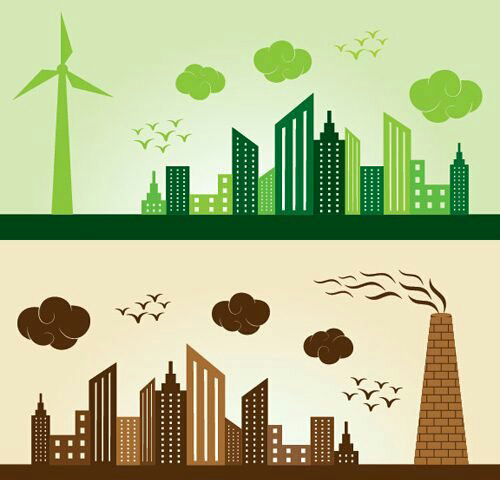our environment
The environment plays an important role in the existence of life on the planet earth. The word Environment is derived from the French word “Environ” which meaning “surrounding.” An ecosystem refers to all the living and the non-living things present in the environment and it is a foundation of the Biosphere, which determines the health of the entire planet earth.
Ecology and Environmental science are the branches of life science which mainly deals with the study of organisms and their interactions among organisms and their environment.
Types of Ecosystem
There are two main types of ecosystem. Listed below are the types and examples of the ecosystem.
- Natural ecosystem – It is a naturally produced biological environment found in nature. It includes deserts, forests, grasslands, lakes, mountains, ponds, rivers, oceans, etc.
- Artificial ecosystem – It is an artificial environment which is created and maintained by man. It includes an aquarium, crop fields, gardens, parks, zoo etc.
The components of the environment are mainly divided into two categories.
Biotic and abiotic are the two essential factors responsible for shaping the ecosystem. The biotic factors refer to all the living beings present in an ecosystem, and the abiotic factors refer to all the non-living components like physical conditions (temperature, pH, humidity, salinity, sunlight, etc.) and chemical agents (different gases and mineral nutrients present in the air, water, soil, etc.) in an ecosystem. Therefore, both the abiotic and biotic resources affect survival and reproduction process.
Furthermore, both these components are reliant on each other. Suppose if one of the factors is removed or altered, its repercussions will be faced by the entire ecosystem. Without a doubt, abiotic factors directly affect the survival of organisms. Read on to explore what role do abiotic and biotic resources play in the ecosystem.
Biotic Meaning
The term “biotic” is formed by the combination of two terms, “bio” meaning life and “ic” meaning like. Thus, the term means life-like and is related to all the living entities present in an ecosystem.
Biotic Factors
Biotic factors relate to all the living things in the ecosystem. Their presence and their biological by-products affect the composition of an ecosystem. Biotic factors refer to all living organisms from animals and humans, to plants, fungi, and bacteria. The interactions between various biotic factors are necessary for the reproduction of each species and to fulfil essential requirements like food, etc.
Examples of Biotic Factors
Examples of biotic resources include all the living components present in an ecosystem. These include producers, consumers, decomposers and detritivores.
Abiotic Meaning
The term abiotic refers to all the non-living factors present in an ecosystem. Sunlight, water, land, all constitute the abiotic factors.
Abiotic Factors
Abiotic factors refer to all the non-living, i.e. chemical and physical factors present in the atmosphere, hydrosphere, and lithosphere. Sunlight, air, precipitation, minerals, and soil are some examples of abiotic factors. These factors have a significant impact on the survival and reproduction of species in an ecosystem.
For instance, without an adequate amount of sunlight, autotrophic organisms may not be able to survive. When these organisms eventually die, it will create a shortage of food for primary consumers. This effect cascades up the food chain, affecting every organism. Consequently, it leads to an imbalance in the ecosystem.
Examples of Abiotic Factors
Abiotic examples typically depend on the type of ecosystem. For instance, abiotic components in a terrestrial ecosystem include air, weather, water, temperature, humidity, altitude, the pH level of soil, type of soil and more. Abiotic examples in an aquatic ecosystem include water salinity, oxygen levels, pH levels, water flow rate, water depth and temperature.
Now, let’s have a look at the significant difference between the abiotic and biotic factors.
Importance of Environment
Environment plays an important role in healthy living and the existence of life on planet earth. Earth is a home for different living species and we all are dependent on the environment for food, air, water, and other needs. Therefore, it is important for every individual to save and protect our environment.
Impacts of Human Activities on the Environment
There are different types of human activities which are directly attributed to the environmental disasters, which includes- acid rain, acidification of oceans, change in the climate, deforestation, depletion of an ozone layer, disposal of hazardous wastes, global warming, overpopulation, pollutions, etc.
An environment is generally defined as the surrounding or conditions in which a person, animal or plant survives or operates. From this, it must be relatively easy for one to comprehend its importance in the famed cycle of life.

Our environment is constantly changing, and as our environment changes so does the need to become increasingly aware of the environmental issues that are causing these changes. With a massive increase in natural disasters, warming and cooling periods, and different types of weather patterns, people need to be a lot more cautious with the way they lead their lives in conjunction with the types of environmental issues our planet is facing.
Environmental Issues
Environmental issues are the harmful effects of human activities on the environment. These include pollution, over-population, waste disposal, climate change, global warming, greenhouse effect, etc.
Various environment protection programs are being practised at the individual, organizational and government levels with the aim of establishing a balance between man and environment.
Some of the current environmental issues that require urgent attention are:
Climate Change
Climate change is a great concern in today’s scenario. This problem has surfaced in the last few decades. Greenhouse gases are the major cause of climate change. Environmental changes have several destructive impacts such as the melting of glaciers, change in seasons, epidemics, etc.
Global Warming
The burning of fossil fuels, emissions from the automobiles and chlorofluorocarbons add to the greenhouse gases in the atmosphere. This has led to an increase in earth’s temperature causing environmental changes. This increase in temperature across the globe is known as global warming.
Ozone Layer Depletion
The ozone layer is a layer of concentrated ozone gas. It protects us from the sun’s harmful ultraviolet rays. This very important layer is being destroyed by CFCs (chlorofluorocarbons), which are used in industries and everyday life (e.g. aerosol cans).
The chlorine in these compounds destroys the ozone layer. The hole in the ozone layer leaves humans and wildlife exposed to the harmful UV rays resulting in several skin diseases including cancer.
Water Pollution
The introduction of harmful substances into rivers, oceans, lakes and ponds, which changes the physical, chemical or biological condition of the water is called water pollution. The polluted water lacks oxygen and therefore the organisms die.
Water is the main source of life and therefore it is our prime duty to prevent it from any kind of pollution.
Air Pollution
Air Pollution is the result of emissions from the industries, automobiles, and increasing use of fossil fuels. The gaseous emissions have added to an increase in the temperature of the earth. Not only this, but it had also increased the risk of diseases among individuals.
Solid Waste Management
Solid-waste management is defined as the discipline associated with the generation, storage, collection, transfer and transport, processing, and disposal of solid waste in a manner that it does not have a harmful effect on the environment.
Deforestation
Deforestation is the depletion of trees and forests at an alarming rate. The trees provide us with oxygen, several raw materials and also maintain the temperature of the earth. Due to the depletion of trees for commercial purposes, there has been a drastic change in the earth’s climate.
Forests are an abode to a large number of wild animals and plants. Destruction of forests has led to the elimination of a large number of plants and animal species affecting the biodiversity.
Over population
The earth’s population is increasing drastically. It is estimated to be more than seven billion. The increasing population has led to a shortage of resources. If this continues, it will be very difficult to sustain such a huge population. The other environmental issues including pollution, waste management, deforestation, climate change and global warming are all associated with over-population.
The term solid waste management mainly refers to the complete process of collecting, treating and disposing of the solid wastes.
In the waste management process, the wastes are collected from different sources and are disposed of. This process includes the collection, transportation, treatment, analysis and disposing of. It needs to be monitored so that strict regulations and guidelines are followed.
Sources of Solid Wastes
- Solid domestic garbage.
- Solid waste material from various industries.
- Solid agricultural waste.
- Plastics, glass, metals, e-waste, etc.
- Medical waste.
- Construction waste, sewage sludge

The process of waste handling and disposal varies in different countries. In India, the processes differ according to the source of solid waste. They can be classified as:
⦁ Municipal Solid Waste.
⦁ Hazardous Solid Waste.
Municipal solid waste can further be divided into biodegradable, recyclable and hazardous domestic wastes. The biodegradable waste includes rotten food, vegetable peel and mostly wet kitchen waste. The recyclable waste includes plastic and the hazardous wastes include, bulb, batteries, etc.
The industry generated like chemical factories, medical waste from hospitals are considered as Hazardous Solid Waste and needs special settings to dispose them.
In any region, solid waste management is very important for the safe disposal of wastes and to reduce environmental pollution and avoid any health hazards that it may cause.
Landfills are the most common methods of disposing solid wastes. Modern-day landfills are designed by taking care of various environmental factors and types of wastes, so as to minimise pollution and health risks.
Effects of Poor Solid Waste Management
Due to improper disposal of solid waste particularly by waste management organizations, the collected wastes gets heap up and become a problem for both the environment and also for the public.
By dumping of huge garbage, drives biodegradable materials to decay and decompose under the abnormal, uncontrolled and unhygienic conditions. After a few days of decomposition, it becomes a breeding ground for different types of disease-causing insects as well as infectious organisms. A foul smell is produced and it also spoils the aesthetic value of the area.
The solid wastes collected from different industries include toxic metals, chemicals, and other hazardous wastes. When these wastes are released into the environment, it can produce biological and physicochemical problems to the environment, the chemicals may drain into the soil and pollute the groundwater and also alter the productivity of the soils in that particular area.
In rare cases, the hazardous wastes may get mixed up with the ordinary garbage and other combustible wastes causing the disposal process even harder and risky.
By burning the paper and other scraps along with the hazardous wastes, dioxins and poisonous gasses are produced and released into the air which results in causing various diseases including chronic disease, skin infections, cancer, etc.
Solutions to Environmental Issues
Following are some of the most common solutions to the environmental issue:
- Replace disposal items with reusable items.
- The use of paper should be avoided.
- Conserve water and electricity.
- Support environmental friendly practices.
- Recycle the waste to conserve natural resources.
Environmental issues are a warning of the upcoming disaster. If these issues are not controlled, there will soon be no life on earth.
























Please this notes give in PDF
ReplyDelete